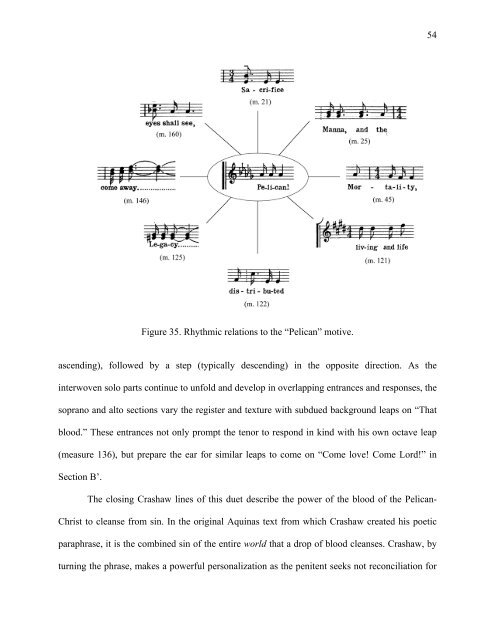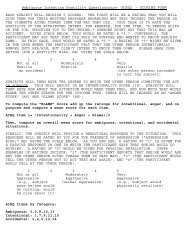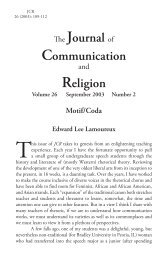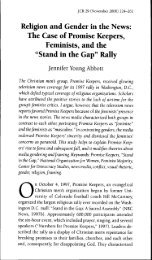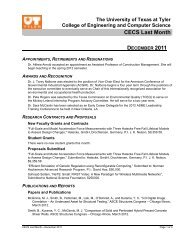"History, Analysis and Performance Considerations of Gerald Finzi's ...
"History, Analysis and Performance Considerations of Gerald Finzi's ...
"History, Analysis and Performance Considerations of Gerald Finzi's ...
Create successful ePaper yourself
Turn your PDF publications into a flip-book with our unique Google optimized e-Paper software.
54Figure 35. Rhythmic relations to the “Pelican” motive.ascending), followed by a step (typically descending) in the opposite direction. As theinterwoven solo parts continue to unfold <strong>and</strong> develop in overlapping entrances <strong>and</strong> responses, thesoprano <strong>and</strong> alto sections vary the register <strong>and</strong> texture with subdued background leaps on “Thatblood.” These entrances not only prompt the tenor to respond in kind with his own octave leap(measure 136), but prepare the ear for similar leaps to come on “Come love! Come Lord!” inSection B’.The closing Crashaw lines <strong>of</strong> this duet describe the power <strong>of</strong> the blood <strong>of</strong> the Pelican-Christ to cleanse from sin. In the original Aquinas text from which Crashaw created his poeticparaphrase, it is the combined sin <strong>of</strong> the entire world that a drop <strong>of</strong> blood cleanses. Crashaw, byturning the phrase, makes a powerful personalization as the penitent seeks not reconciliation for


